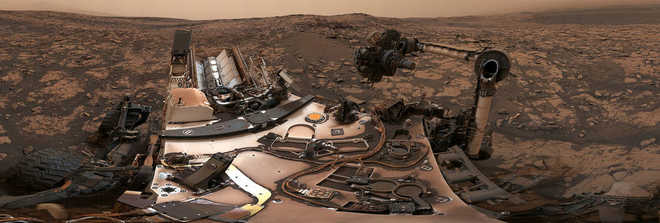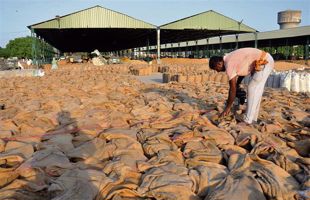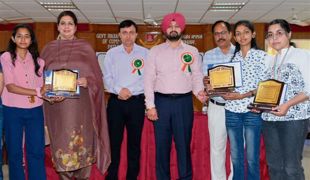
This 360-degree panorama was taken on Aug. 9 by NASA''s Curiosity rover at its location on Vera Rubin Ridge. Credits: NASA
Washington
NASA's Curiosity rover has beamed back a 360-degree panoramic view of the Martian landscape, revealing reddish-brown skies darkened by a fading global dust storm that has enshrouded the red planet for weeks.
The panorama, captured from Curiosity's current location on Vera Rubin Ridge, also includes a rare view by the Mast Camera of the rover itself, revealing a thin layer of dust on its deck. The rover surveyed its surroundings after collecting a new rock sample on August 9.
Its last two drill attempts were thwarted by unexpectedly hard rocks, NASA said in a statement.
Curiosity started using a new drill method earlier this year to work around a mechanical problem.
Testing has shown it to be as effective at drilling rocks as the old method, suggesting the hard rocks would have posed a problem no matter which method was used.
There's no way for Curiosity to determine exactly how hard a rock will be before drilling it, so for this most recent drilling activity, the rover team made an educated guess.
An extensive ledge on the ridge was thought to include harder rock, able to stand despite wind erosion; a spot below the ledge was thought more likely to have softer, erodible rocks.
That strategy seems to have panned out, but questions still abound as to why Vera Rubin Ridge exists in the first place.
The rover has never encountered a place with so much variation in colour and texture, according to Ashwin Vasavada, Curiosity's project scientist at NASA's Jet Propulsion Laboratory in the US.
“The ridge isn't this monolithic thing—it has two distinct sections, each of which has a variety of colours,” Vasavada said.
“Some are visible to the eye and even more show up when we look in near-infrared, just beyond what our eyes can see. Some seem related to how hard the rocks are,” he said.
The best way to discover why these rocks are so hard is to drill them into a powder for the rover's two internal laboratories.
Analysing them might reveal what's acting as “cement” in the ridge, enabling it to stand despite wind erosion.
Most likely, Vasavada said, groundwater flowing through the ridge in the ancient past had a role in strengthening it, perhaps acting as plumbing to distribute this wind-proofing “cement”. Two more drilled samples are planned for the ridge in September. After that, Curiosity will drive to its scientific end zone: areas enriched in clay and sulfate minerals higher up Mount Sharp. PTI



























